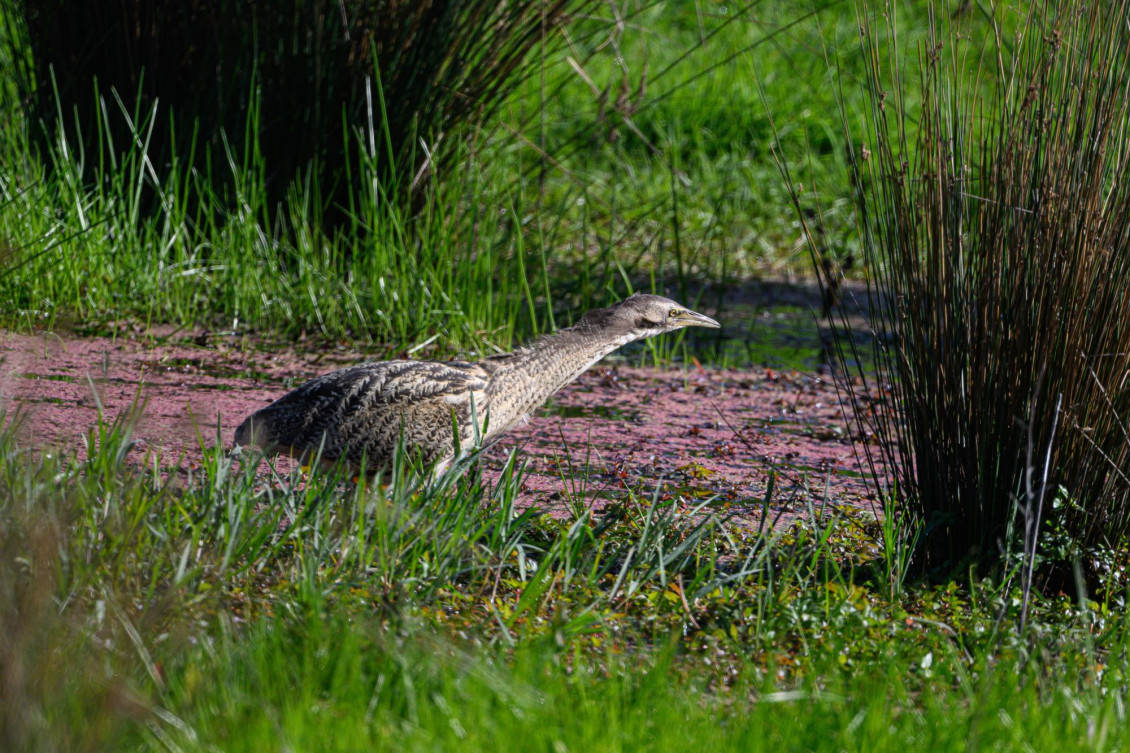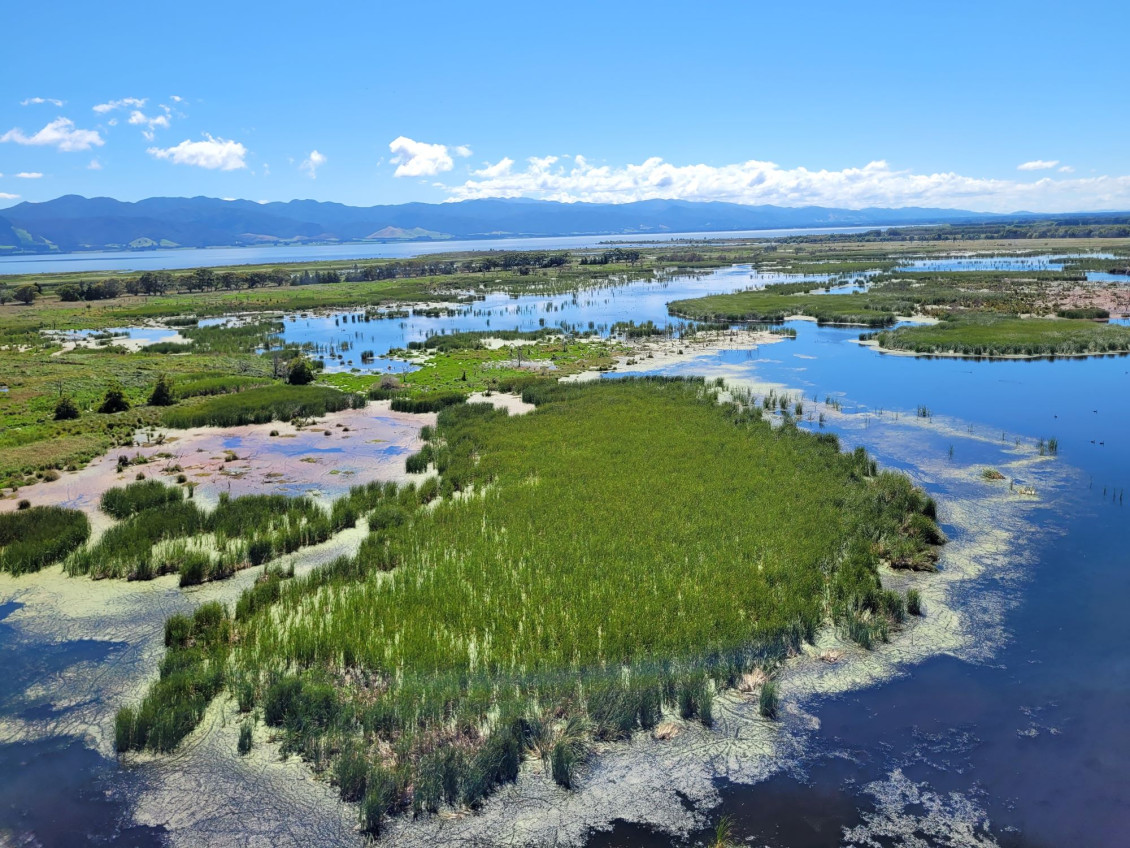Boom of rare native birds in Wairarapa Moana


Years of restoration and predator control efforts have given critically endangered native bird populations the chance to thrive in the Wairarapa Moana Wetlands, says Greater Wellington.
The matuku-hūrepo or Australasian bittern’s threat status is nationally critical – the last step before extinction – with less than 1,000 birds living in wetlands across Aotearoa. Nestled in the Wairarapa Moana Wetlands, these rare native birds meld into the grasses and raupō, found only by their booming call.
Matuku are secretive, stealthy and difficult to spot due to their clever earth-coloured camouflage. To count the birds is to stand in the wetlands just before dawn or dusk, and listen for the “booms and wooms” of the males’ call.
The best time to hear a bittern is between September and February during their breeding season – booming season. Roger Uys, Senior Environmental Scientist at Greater Wellington, says recently more matuku have been heard at the Wairarapa Moana Wetlands than ever before.
“Not so long ago there was serious national concern that the bittern population was going backwards,” says Uys. “Now I can confidently say the bittern are thriving at Wairarapa Moana, because of the predator control work we do.
“Both the bittern and spotless crake nest on the ground, where they’re vulnerable to predators with nests in easy reach of stoats and hedgehogs.
“Hearing the breeding matuku is a special sign that all the restoration efforts are working.”
The Wairarapa Moana Wetlands are one of the few wetlands in Aotearoa recognised as a Ramsar site of international significance. Locally, Māori pūrākau and connection to the area run as deep as the lake.
Ngāti Kahungunu ki Wairarapa kaiwhakahaere taiao Rawiri Smith belongs to the Wairarapa Moana Wetlands project, often sharing kōrero about the plants, pests, and place.
“In te ao Māori, the male matuku booms in loneliness and despair. The matuku and its calls were woven into waiata and kōrero to comfort people in their grief,” says Smith.
“The calls still hold that chilling feeling, as we grieve the loss of 97 percent of the repo (wetlands) that surrounded Wairarapa Moana.
“We want to work collaboratively to expand the remaining wetlands, in Māori we call this mahi tūhono, the work of connecting.
“If we can reduce the introduced predators in our lands and forests, then we might have a chance to replenish, and a chance for manu (birds) like the matuku and pūweto (spotless crake) to grow and enhance the mauri (life force) of the place.”
If the wetlands were a quilt, traps to reduce predators would be a decorative border surrounding the blue, green and brown shapes of flora and fauna. It was Greater Wellington’s Senior Biosecurity Officer Steve Playle who set up the intricate network of 470 traps in 2013.
“I’ve known the wetlands for more than 40 years,” says Playle. “As a hunter and frequent visitor, I saw my role in leading the wetland’s predator control as an opportunity to give back to the land.
“It can take years of trapping and planting before we begin to see the impact of our work. We’ve removed thousands of hedgehogs and rats, and hundreds of ferrets, feral cats and mice from the Wairarapa Moana.
“And now, we’re seeing endangered wildlife flourish – it’s the wetlands telling us how effective long-term predator control is.”
Decades of conservation efforts have fed into the Wairarapa Moana project, a collaboration between Greater Wellington, Ngāti Kahungunu ki Wairarapa, Rangitāne o Wairarapa, Department of Conservation and the South Wairarapa District Council.
Visitors of the Wairarapa Moana may hear the booms as they bellow across the wetlands, or see a matuku standing upright with its beak toward the sky, imitating the tall rāupo.

This bi-weekly newsletter features exciting events, opportunities to have your say on important projects, latest news and stories from across the council.
Get in touch
- Phone:
- 0800 496 734
- Email:
- info@gw.govt.nz
